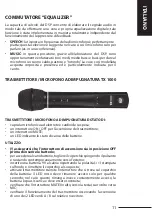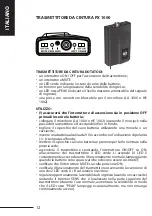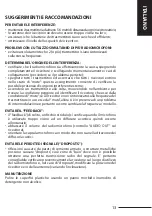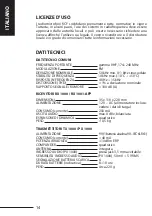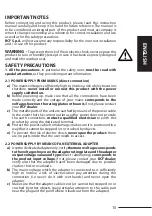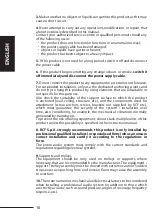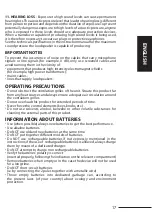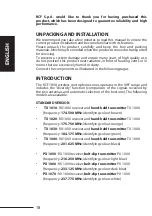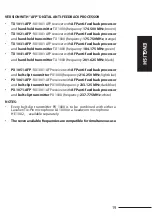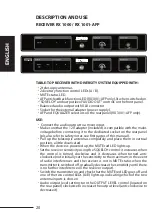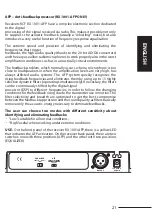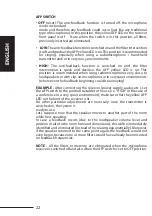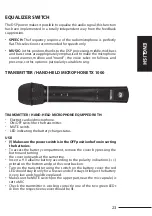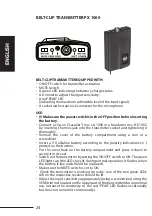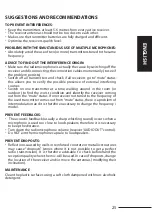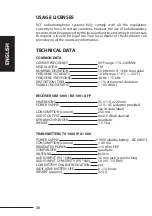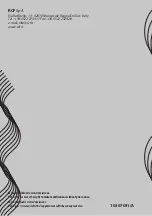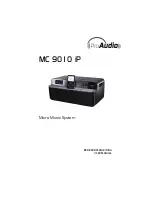
ENGLISH
25
SUGGESTIONS AND RECOMMENDATIONS
TO PREVENT INTERFERENCES:
• Keep the transmitters at least 5-6 metres from every active receiver.
• The receiver antennas should not be too close to each other.
• Make sure the transmitter batteries are fully charged and efficient.
• Optimise the receiver squelch level.
PROBLEMS WITH THE SIMULTANEOUS USE OF MULTIPLE MICROPHONES:
• Absolutely avoid the use of two (or more) transmitters tuned to the same
frequency.
ADVICE TO FIND OUT THE INTERFERENCE ORIGIN:
• Make sure the radiomicrophone is actually the cause by switching off the
receiver and disconnecting the connection cables momentarily (to see if
the problem persists).
• Switch off all transmitters and check if all receivers go to “mute” status:
this allows you to verify the possible presence of external interfering
sources.
• Switch on one transmitter at a time, walking around in the room (or
outdoor) to find the worst condition and identify the receiver coming
out from the “mute” status. If one receiver not tuned to the frequency of
the used transmitter comes out from “mute” status, there is a problem of
intermodulation and it is therefore necessary to change the frequency /
model.
PREVENT FEEDBACKS:
• The acoustic feedback (usually a sharp whistling sound) occurs when a
microphone is used too close to loudspeakers; therefore it is necessary
to keep the distance.
• Turn down the radiomicrophone volume (receiver “AUDIO OUT” control).
• Do NOT aim the microphone capsule to loudspeakers.
PREVENT DROPOUTS:
• Reflections caused by walls in reinforced concrete or metallic structures
may cause “dropouts” (zones where it is not possible to get a perfect
radio transmission). It is therefore advisable to check beforehand the
reception quality where the mic. will be used. In case of dropouts, change
the location of the receiver and/or move the antennas (modifying their
inclination).
MAINTENANCE
Clean the plastic surfaces using a soft cloth dampened with non-alcoholic
detergent.

